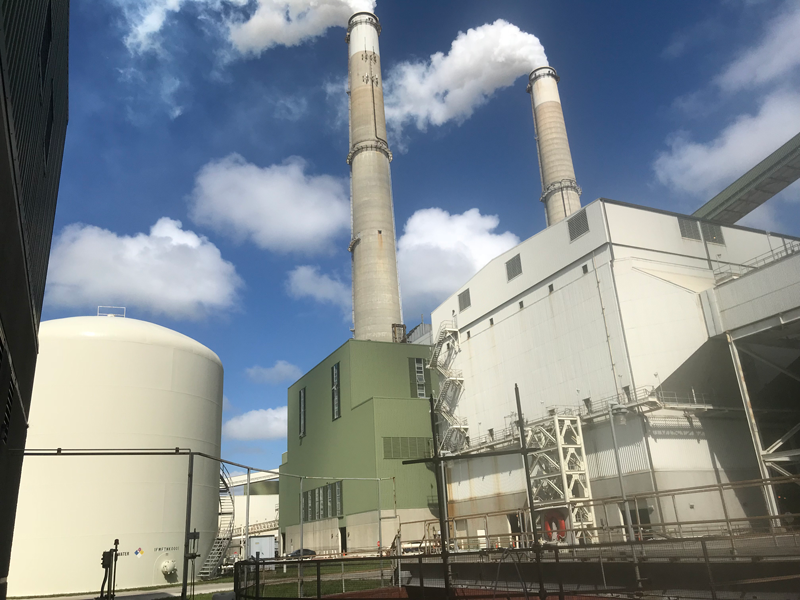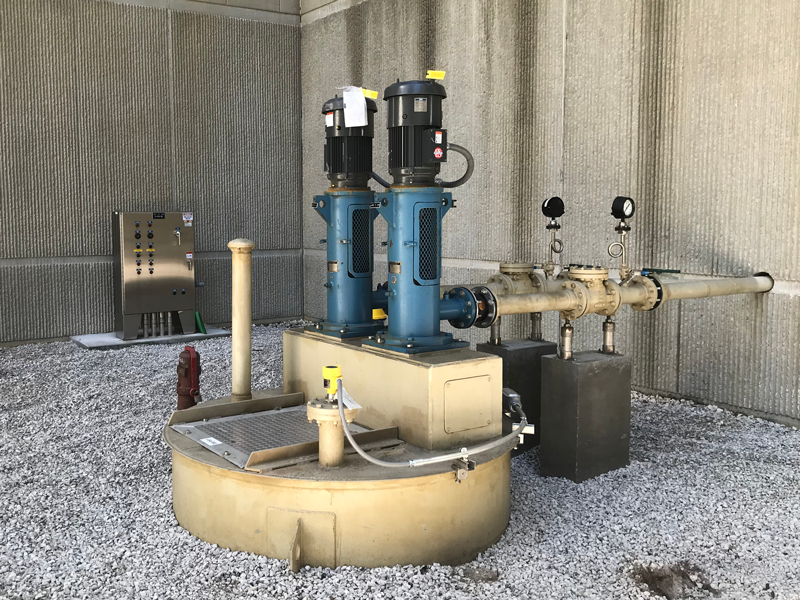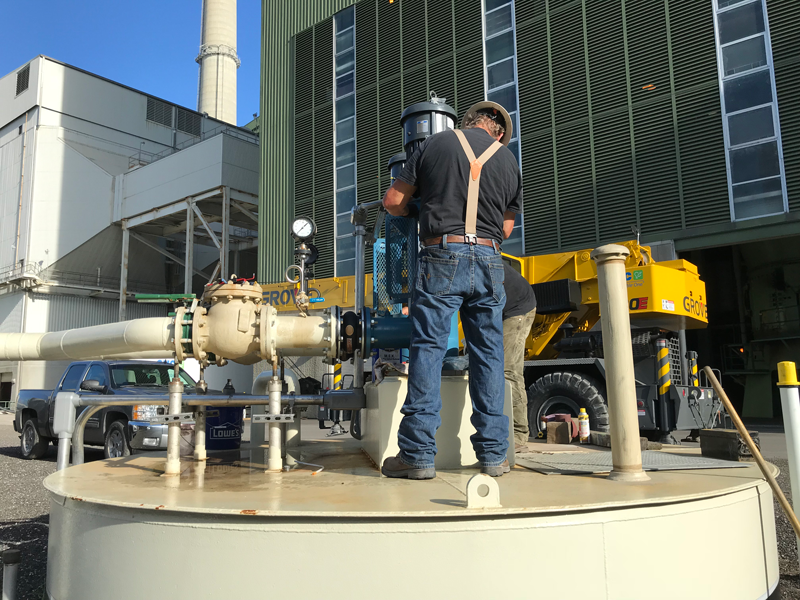
Romtec Utilities engineers and manufactures pumping systems for a wide variety of applications. We have design many types of pump stations for power plants and power generating facilities. These systems range from sewer lift stations to handle wastewater to very specific recirculation systems. At cogeneration or combined cycle plants, heat recovery steam generators (HRSG) are systems that use thermal energy to increase the efficiency of power conversion from natural gas. On a recent project, Romtec Utilities engineered two sophisticated HRSG pumping systems for the Orlando Utilities Commission (OUC) outside of Orlando, Florida.

HRSG systems are effectively a form a steam generator. After Natural gas is ignited to generate power via combustion, a substantial amount of energy is still available in the form of heat. Using water pipes, heat is transferred from the ignited gas to the water, creating steam pressure to generate power. Then the steam condenses and must be recirculated or discharged to treatment. Two challenges for recirculation of this water is the extreme temperature and the water chemistry. Rapid heating of the water effectively distills it, creating water that can be corrosive. To overcome these challenges, unique design configurations were used to meet the OUC requirements for these two pumping systems.
One of the biggest engineering decisions was to use stainless steel tanks for both pumping systems. Romtec Utilities was originally contacted to engineer these tanks because of the special design requirements. The stainless steel tanks offered robust storage capabilities for the extremely hot and potentially corrosive water. Each tank was also coated on the interior and exterior to provide additional protection. The next major consideration was the pumps. In this scenario, the water chemistry made it very difficult to use any type of submersible pump. Instead, Romtec Utilities engineered these systems with surface-mounted pumps to avoid contact with the water. Each system used Goulds turbine pumps. The larger system included 10 hp motors with three pump stages, while the smaller system used 5 hp pump motors with 5 stages. The submerged stages for the pump turbines utilized materials suitable for operating in the specified temperature and chemistry range of the water. Both systems utilized a duplex pump configuration to provide redundancy and the ability to cycle pump starts.

These two systems needed an advanced form of liquid level sensing. Using in-well sensors was not desirable due to the water temperature, and some sensors that operate out of the well have a difficult time sensing liquid levels in the presence of steam, which was anticipated. One of the most reliable forms of level sensing with variable pressure, temperature, and atmospheric conditions is radar. Radar sensors utilize microwaves to reflect a signal off a liquid. The time measurement between the transmission of the signal and receiving the reflected signal allows the control panel to calculate the liquid level. Radar is very robust because it can be surface-mounted and does not need to contact the water or media it is measuring. It also can be programmed to ignore conditions like steam that can partially reflect a signal, which with other level sensors can cause a misreading.

These two new HRSG pumping systems for the OUC operated Curtis H. Stanton Energy Center are sophisticated systems that were engineered to very specific operational requirements. Many additional specifications and requirements were met through the design of these systems, and these major features are good examples of the type of expertise that Romtec Utilities brings to these types of industrial projects. Romtec Utilities has designed HRSG pumping systems with concrete, fiberglass, and steel in rectangular and round sumps and with different coatings. For these difficult applications, it is important to consider the very specific requirements of each project to create a pump station design that will work long into the future. Contact Romtec Utilities today to learn more about our pump stations for power generation plants.
